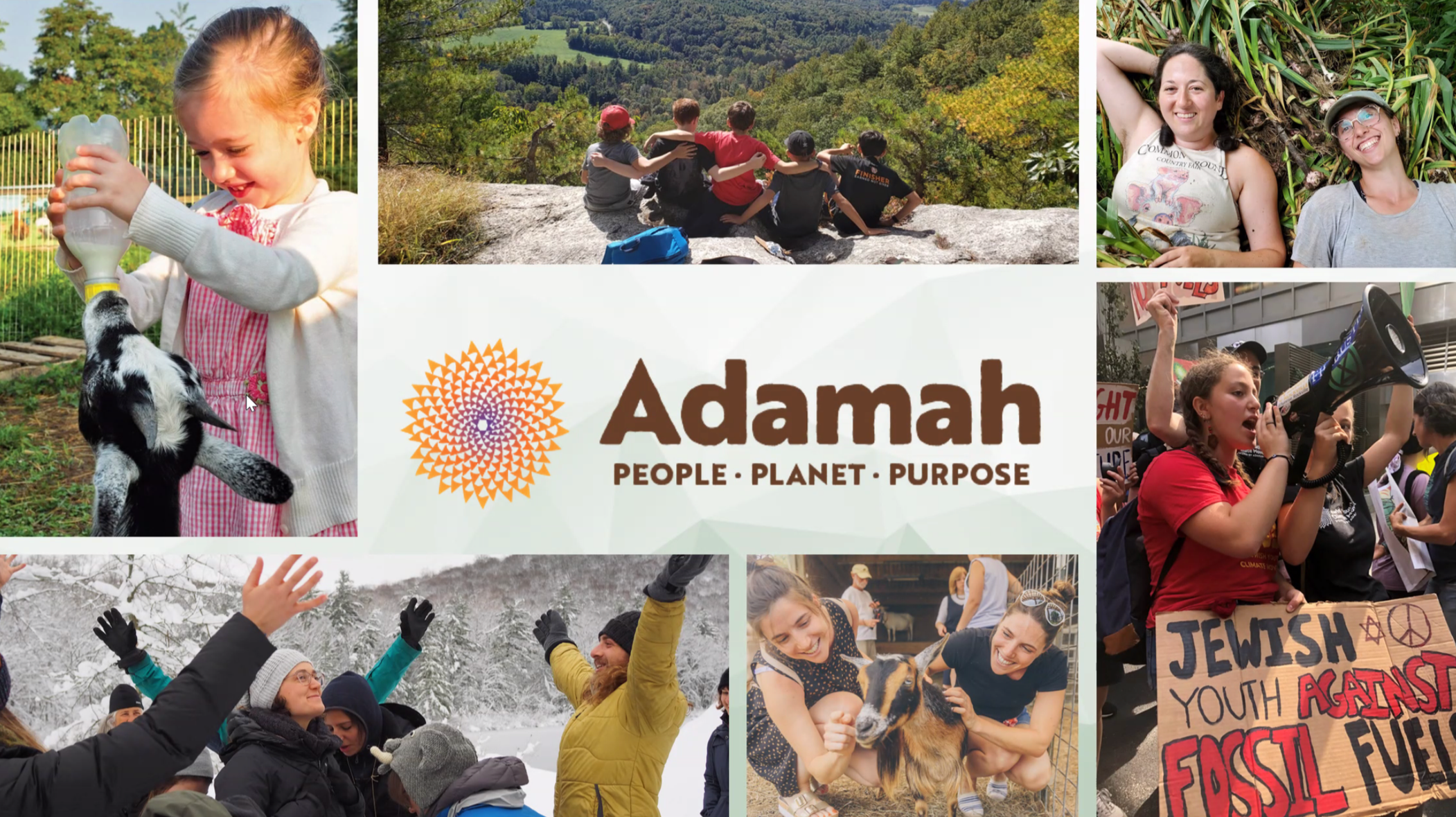CAJM Talking Circles: November 20, 2025
Key Takeaways
Lots of museums are already doing this work: joining the coalition elevates this work and opens resources and funding opportunities.
Don’t do this work behind the curtains - tell your audience and include them!
First steps you can take: 1. switch to LEDs. 2. take an inventory (appliances, building, programming) - hard to set goals unless you know where you already are!
Related Resources
Websites
Adamah is an organization dedicated to promoting environmental sustainability rooted in Jewish values, focusing on community engagement, advocacy, and educational programs to foster ecological stewardship and social justice.
Adamah Coalition details a collective of partners working collaboratively on environmental and social justice initiatives, emphasizing community-driven action and sustainable development aligned with faith-based principles. You can join directly here.
Skirball's transportation info provides directions and parking options for visitors, including nearby transit options and parking facilities to facilitate easy access to the center. This was shared as a simple action item - add this info to your website!
The Sustainability Venn Diagram visually represents the interconnectedness of environmental health, social equity, and economic vitality, highlighting the importance of balancing these three pillars for sustainable development.
ClimateCheck provides detailed site-specific climate risk assessments, helping communities and planners understand local climate impacts such as flooding, heat, and storms. This information supports better planning, resilience strategies, and risk mitigation to adapt to changing climate conditions at a local level.
Climate.us offers up-to-date, comprehensive climate information, news, and resources to raise awareness and inform decisions related to climate change. It engages users in understanding ongoing climate issues and encourages action through reliable data and educational content.
National Oceanic and Atmospheric Administration - Flood Exposure features flood maps that identify vulnerable areas prone to flooding from storms or rising sea levels. This tool aids emergency planning, property assessments, and community resilience efforts by providing accurate, localized flood risk data.
Project Drawdown provides detailed information on innovative climate solutions, technology, and practices that reduce carbon emissions. It offers strategies for individuals, communities, and businesses to mitigate climate change and transition toward sustainable, low-carbon lifestyles and operations.
Environment and Culture Partners supports environmental leadership development within the cultural sector by offering training, resources, and initiatives that promote sustainability. It aims to help cultural institutions lead efforts to reduce environmental impact and foster sustainable practices.
Energy Star offers benchmarking tools for commercial buildings to evaluate energy consumption and efficiency. This resource supports owners and managers in identifying opportunities to reduce energy usage, cut costs, and lower environmental impact through proven energy-saving strategies.
EPA Emissions Calculator enables organizations to estimate their greenhouse gas emissions quickly and accurately. This tool supports tracking progress toward emission reductions and informed decision-making for climate mitigation efforts.
First Street assesses property-level climate risks related to flooding, storms, and sea level rise, providing essential data for resilience planning. This information helps property owners, developers, and policymakers develop strategies to reduce vulnerability and adapt to climate impacts.
Find My Elevation calculates the elevation above sea level for various locations, critical for understanding flood risks, sea level rise, and geographic vulnerability. It helps planners, researchers, and residents assess climate-related hazards and adapt accordingly.
Climate Resilience Resources for Cultural Heritage offers guidance and tools for cultural organizations to develop resilience strategies against climate threats. It supports strategic planning, action development, and adaptive measures to protect cultural sites and collections from climate impacts.
Harvard: Sustainable Purchasing provides resources and best practices to help organizations make environmentally responsible purchasing decisions. It promotes sustainability through green procurement policies, reducing environmental and social impacts.
Sustainability Indicator Management and Analysis Platform offers simple, effective tools for calculating carbon footprints and understanding sustainability impacts. It simplifies decision-making for individuals and organizations seeking to reduce their environmental impact and adopt more sustainable practices.
STITCH provides tools that enable cultural heritage professionals to make informed, sustainable choices in preservation, management, and conservation efforts. It promotes environmentally responsible practices for protecting cultural assets while minimizing ecological impact.
Art Recovery LA provides online resources focused on disaster preparedness, response, and recovery for cultural institutions. It offers guidance on handling fire, natural disasters, and emergencies, including strategies for protecting and restoring artworks, managing risk, and implementing recovery plans to safeguard cultural heritage during crises.
Books
High Tide on Main Street by John Englander explores rising sea levels and climate change impacts on coastal communities, emphasizing the need for proactive adaptation and resilience strategies to protect homes, infrastructure, and ecosystems from future flooding threats.
Interpreting Energy at Museums and Historic Sites by Leah Glaser offers guidance on communicating energy use, conservation efforts, and sustainability to visitors, helping museums promote environmental responsibility while educating audiences on energy issues.
What if We Get it Right? by Ayana Elizabeth Johnson encourages optimistic, innovative approaches to climate solutions, emphasizing the importance of hope, collaboration, and proactive change to address climate challenges effectively.
Museums in a Troubled World: Renewal, Irrelevance or Collapse by Robert Janes analyzes how museums can adapt to social, environmental, and technological changes, debating whether they can remain relevant, evolve for renewal, or face obsolescence in a changing world.
The Green Museum: A Primer on Environmental Practice by Sarah Brophy and Elizabeth Wylie provides practical guidance and strategies for museums to incorporate sustainable practices, reduce environmental impact, and promote environmental stewardship in cultural institutions.
Museums
The Climate Museum in New York City is dedicated to raising awareness about climate change through exhibitions, public programs, and educational initiatives. It aims to inspire action by engaging diverse audiences in understanding climate science, impacts, and solutions, fostering a culture of environmental responsibility and advocacy in urban communities.
The Wild Center in Tupper Lake, NY, is an experiential nature and environmental education center that offers hands-on exhibits, outdoor adventures, and eco-arts programs. It focuses on inspiring stewardship and understanding of the Adirondacks’ ecosystems, encouraging visitors to connect with nature and engage in efforts to protect wildlife and natural resources.



